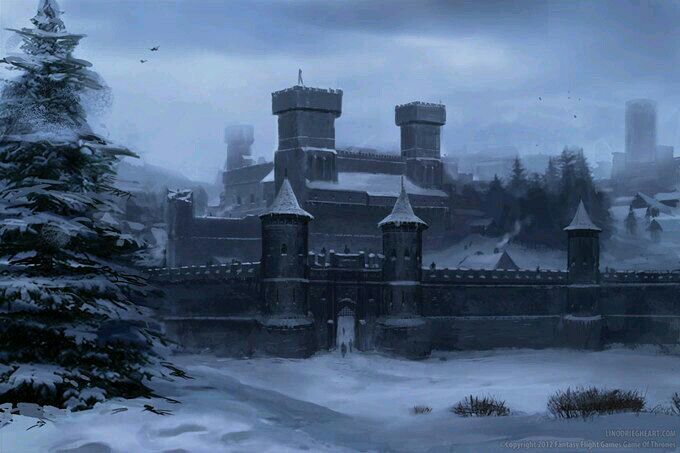
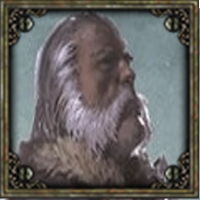 Rodrik Cassel: Welcome to Winterfell, lad. I hope the journey wasn’t too unpleasant. Earlier this morning your lord father went hunting with lord Stark and he requested you to stay and me to train you along with Robb and Theon. Finish up your bacon and then I’ll meet you in the yard.
Rodrik Cassel: Welcome to Winterfell, lad. I hope the journey wasn’t too unpleasant. Earlier this morning your lord father went hunting with lord Stark and he requested you to stay and me to train you along with Robb and Theon. Finish up your bacon and then I’ll meet you in the yard.
-Later, in the yard-
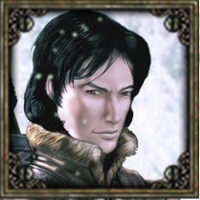 Theon Greyjoy: Come get me, Stark!
Theon Greyjoy: Come get me, Stark!
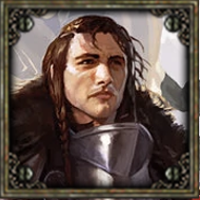 Robb Stark: Take this, Greyjoy! Oh, wait. Good morning, I didn’t have the chance to greet you last night when you arrived, it was already too late. I’m Robb Stark, heir of Winterfell.
Robb Stark: Take this, Greyjoy! Oh, wait. Good morning, I didn’t have the chance to greet you last night when you arrived, it was already too late. I’m Robb Stark, heir of Winterfell.
 Theon Greyjoy: I’m Theon of house Greyjoy. Have you ever met an ironborn? Oh, so you’re training with us today? Let’s see what you’re made of.
Theon Greyjoy: I’m Theon of house Greyjoy. Have you ever met an ironborn? Oh, so you’re training with us today? Let’s see what you’re made of.
 Rodrik Cassel: Enough of that, Theon! Put down that sword. Alright, lads, gather around me. Today we’re gonna learn about the battle system, so I need you to pay attention, for when war comes, knowing this can be the difference between victory and defeat. The composition of an army is one of the most important aspects of warfare.
Rodrik Cassel: Enough of that, Theon! Put down that sword. Alright, lads, gather around me. Today we’re gonna learn about the battle system, so I need you to pay attention, for when war comes, knowing this can be the difference between victory and defeat. The composition of an army is one of the most important aspects of warfare.
 Theon Greyjoy: I know that, it’s easy: you just send your soldiers against the enemy soldiers and the army with the sharpest axes and the best bows wins.
Theon Greyjoy: I know that, it’s easy: you just send your soldiers against the enemy soldiers and the army with the sharpest axes and the best bows wins.
 Rodrik Cassel: Perhaps that’s the way of the Ironborn, Theon, but if you want to win in the North then you’ll have to learn that there’s a bit more to it than that. Undisciplined armies might be built on that premise but successful armies require more to beat your opponent in the battlefield.
Rodrik Cassel: Perhaps that’s the way of the Ironborn, Theon, but if you want to win in the North then you’ll have to learn that there’s a bit more to it than that. Undisciplined armies might be built on that premise but successful armies require more to beat your opponent in the battlefield.
 Robb Stark: Alright, ser Rodrik. We’re ready.
Robb Stark: Alright, ser Rodrik. We’re ready.
 Rodrik Cassel: So let’s start with the most basic of all lessons.
Rodrik Cassel: So let’s start with the most basic of all lessons.
There’s three types of units: Infantry, Ranged, and Cavalry units. Infantry is the backbone of your army, they can soak up quite some damage and also deal a little bit of that themselves. Cavalry is swift and can hit hard, but they are also fragile when in a bad position. Finally, Ranged units are the most fragile of them all but they can deal damage from distance, so if you keep them safe they will do an amazing job.
 Robb Stark: I see Cavalry and Ranged units have clear purposes, but what can you do with Infantry units?
Robb Stark: I see Cavalry and Ranged units have clear purposes, but what can you do with Infantry units?
 Rodrik Cassel: That’s a great question, Robb. Let’s take a look at what Infantry units can an army muster and what you can do with them:
Rodrik Cassel: That’s a great question, Robb. Let’s take a look at what Infantry units can an army muster and what you can do with them:
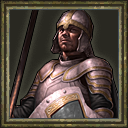
The Pikeman is going to be your preferred unit when trying to train a resistant army. They are armed, of course, with a Pike and a Shield. They also have the best armor out of all basic Infantry units, so they are the best unit to keep the line.
Pike units are usually good against Sword units and Cavalry units.
Units with Shields are more resistant against Ranged damage and also have access to the Cover stance, which allows them to ignore most Ranged damage while moving.
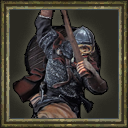
The Axeman is another Infantry unit. This unit is cheap and both moves and attacks pretty fast. They are armed with an Axe and a Shield and are Irregular units as well.
Axe units are usually good against Pike units and Ranged units, this means Axeman can easily break through an archer formation, even when defended by Pikemen.
Axemen are also Irregular units, which means they will take more damage from units that are specialized against them, like Knights or Skirmishers.
 Theon Greyjoy: Irregular or not, an army of Axemen can defeat any army with that movement speed and high damage output!
Theon Greyjoy: Irregular or not, an army of Axemen can defeat any army with that movement speed and high damage output!
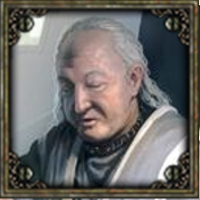 Maester Luwin: Sorry to interrupt, but Theon, axemen might be very good at doing what they do best, but they will do poorly against almost everything else. Look at your father’s foolish rebellion if you want to look at an example of that.
Maester Luwin: Sorry to interrupt, but Theon, axemen might be very good at doing what they do best, but they will do poorly against almost everything else. Look at your father’s foolish rebellion if you want to look at an example of that.
 Theon Greyjoy: ...
Theon Greyjoy: ...
 Rodrik Cassel: Maester Luwin is correct, axemen are great at doing their thing but in everything else they fall short. Now let’s continue.
Rodrik Cassel: Maester Luwin is correct, axemen are great at doing their thing but in everything else they fall short. Now let’s continue.
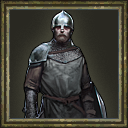
The Man-at-Arms is the epitome of Infantry. This unit is armed with a Sword and a Shield and can fight almost everything.
Sword units are usually good against Infantry and Axe units, so that means an Axeman will get destroyed by a Man-at-Arms.
Sadly, a Sword is an expensive weapon so an army of Men-at-Arms might not be the most viable, but to always have them in your army will benefit you in the long run.
 Robb Stark: But ser Rodrik, so far all units have Shield. Does that mean Ranged units are useless?
Robb Stark: But ser Rodrik, so far all units have Shield. Does that mean Ranged units are useless?
 Rodrik Cassel: All units so far have shields, yes, but that will not always be the case. Also, even while Shield units can take reduced damage from Ranged units, that doesn’t mean ranged units are useless, since they will always be dealing damage. Pay no attention to Ranged units and no Shield can save you! Cover stance gives you great coverage against arrows but it will also limit your movement and attack speed, leaving you exposed to Cavalry and Infantry charges. Anyway, I have one last Infantry unit to show you:
Rodrik Cassel: All units so far have shields, yes, but that will not always be the case. Also, even while Shield units can take reduced damage from Ranged units, that doesn’t mean ranged units are useless, since they will always be dealing damage. Pay no attention to Ranged units and no Shield can save you! Cover stance gives you great coverage against arrows but it will also limit your movement and attack speed, leaving you exposed to Cavalry and Infantry charges. Anyway, I have one last Infantry unit to show you:
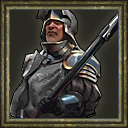
The Halberdier is the strongest Infantry unit of them all, but only available from Age III. They are armed only with a Halberd, which counts as a Pike but with a few key differences.
Halberds are too heavy for Halberdiers to be able to carry a Shield, so they will take full damage from Ranged units. To compensate for that, Halberdiers have very high armor and a lot of Hitpoints. Also, Halberds act exactly like a Pike would, they beat Cavalry and Sword units, but they also beat other Pike units!
 Theon Greyjoy: So, if I’m getting this right: Axes beat Pikes, Pikes beat Swords and Swords beat Axes. Also Axes are good against Ranged units, Pikes are good against Cavalry units and Swords are good against Infantry units. That means every Infantry unit has a specialization and when fighting Infantry vs Infantry, the Sword will almost always be your best option, is that correct?
Theon Greyjoy: So, if I’m getting this right: Axes beat Pikes, Pikes beat Swords and Swords beat Axes. Also Axes are good against Ranged units, Pikes are good against Cavalry units and Swords are good against Infantry units. That means every Infantry unit has a specialization and when fighting Infantry vs Infantry, the Sword will almost always be your best option, is that correct?
 Rodrik Cassel: That’s correct, Theon. Even when Pikes have a bonus against Swords, the bonus of Swords against Infantry will mean that when at disadvantage, Men-at-Arms will still do a good job.
Rodrik Cassel: That’s correct, Theon. Even when Pikes have a bonus against Swords, the bonus of Swords against Infantry will mean that when at disadvantage, Men-at-Arms will still do a good job.
 Maester Luwin: I want to add that while this might look simple enough, the Seven Kingdoms are full of Unique Units that challenge the way this system works, let alone the continent of Essos. The Mountain Clans of the Vale will usually fight with just an Axe and no shield, Sellswords will fight with just a sword and here in the North, the Northern Clansmen will fight with a Greatsword, Umber Berserkers will fight with dual axes and Mormont Shield-Maidens will fight heavily armored and with a different weapon: a Mace, which is a type of Axe with a bonus against Infantry. To learn the basics is the key to understanding warfare, but you should always remember that rules are meant to be broken. But don’t tell lord Stark I said that!
Maester Luwin: I want to add that while this might look simple enough, the Seven Kingdoms are full of Unique Units that challenge the way this system works, let alone the continent of Essos. The Mountain Clans of the Vale will usually fight with just an Axe and no shield, Sellswords will fight with just a sword and here in the North, the Northern Clansmen will fight with a Greatsword, Umber Berserkers will fight with dual axes and Mormont Shield-Maidens will fight heavily armored and with a different weapon: a Mace, which is a type of Axe with a bonus against Infantry. To learn the basics is the key to understanding warfare, but you should always remember that rules are meant to be broken. But don’t tell lord Stark I said that!
 Robb Stark: To know your enemy is half the fight. I can see that now. Ser Rodrik, will you teach us about Cavalry units now?
Robb Stark: To know your enemy is half the fight. I can see that now. Ser Rodrik, will you teach us about Cavalry units now?
 Theon Greyjoy: I’d rather learn about Ranged units next.
Theon Greyjoy: I’d rather learn about Ranged units next.
 Rodrik Cassel: Well, apparently we have a tie, so maybe we should let the lad decide. What do you want to learn next, kid?
Rodrik Cassel: Well, apparently we have a tie, so maybe we should let the lad decide. What do you want to learn next, kid?
-After the break-
 Rodrik Cassel: Alright, so the lad wants to learn about Cavalry first and then Ranged units. Are you boys ready?
Rodrik Cassel: Alright, so the lad wants to learn about Cavalry first and then Ranged units. Are you boys ready?
 Robb Stark: Yes, ser Rodrik.
Robb Stark: Yes, ser Rodrik.
 Theon Greyjoy: Show us, ser Rodrik.
Theon Greyjoy: Show us, ser Rodrik.
 Rodrik Cassel: Since you are young, my lords, you probably don’t really know the actual value of a horse. You have to breed them and take care of them if you want them to serve you well in battle. That means horses are expensive, and you need experienced soldiers to ride them too if you don’t want all of that to go to waste. Cavalry is very useful in battle: It can give you vision of your opponent, mobility to take down important objectives and they are also good at fighting. Let’s take a look
Rodrik Cassel: Since you are young, my lords, you probably don’t really know the actual value of a horse. You have to breed them and take care of them if you want them to serve you well in battle. That means horses are expensive, and you need experienced soldiers to ride them too if you don’t want all of that to go to waste. Cavalry is very useful in battle: It can give you vision of your opponent, mobility to take down important objectives and they are also good at fighting. Let’s take a look
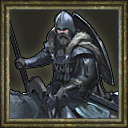
The Outrider is a decent fighter and, most importantly, has a big Line of Sight. Having Outriders in your army will ensure you can see whatever your opponent might be doing. They carry a Sword and a Shield. Having both a Sword and being a Cavalry unit means they are taken down easily by Pikemen and Halberdiers. They have bonuses against Axes and against all types of Infantry, including Ranged units, which is what the Outriders should aim for in an actual battle, taking down ranged units.
 Theon Greyjoy: So Outriders provide you with speed and vision, but I don’t really see them as powerful battle units, ser Rodrik.
Theon Greyjoy: So Outriders provide you with speed and vision, but I don’t really see them as powerful battle units, ser Rodrik.
 Rodrik Cassel: Well, Theon, you’re right this time. Outriders are great at scouting and flanking but they aren’t as resistant as one might think, although they still can take a few hits before going down, but they’re on a horse, after all.
Rodrik Cassel: Well, Theon, you’re right this time. Outriders are great at scouting and flanking but they aren’t as resistant as one might think, although they still can take a few hits before going down, but they’re on a horse, after all.
 Robb Stark: Are you going to talk about Knights now, ser Rodrik? I’m sure they can fight like no other military unit.
Robb Stark: Are you going to talk about Knights now, ser Rodrik? I’m sure they can fight like no other military unit.
 Rodrik Cassel: Indeed, my lord. Knights are the best expression of raw power there is.
Rodrik Cassel: Indeed, my lord. Knights are the best expression of raw power there is.
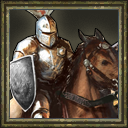
Speed, damage and hitpoints. Knights are highly trained and highly armored units that can move fast and take down enemies like no other unit. Even one Knight can be enough to turn the tides of a battle. Knights are Cavalry units and they carry a Lance and a Shield. Knights, it must be said, are expensive units, though, so if you happen to command Knights into battle, take care of them.
 Robb Stark: Cavalry units, then, have speed and an overall tankiness in common, is that right? Also, while being similar, both cavalry units have different strengths, Outriders can explore, move swiftly and are good to flank, while the Knight is a good unit to keep in the middle of the battlefield, breaking enemy lines.
Robb Stark: Cavalry units, then, have speed and an overall tankiness in common, is that right? Also, while being similar, both cavalry units have different strengths, Outriders can explore, move swiftly and are good to flank, while the Knight is a good unit to keep in the middle of the battlefield, breaking enemy lines.
 Rodrik Cassel: You got it right, my lord.
Rodrik Cassel: You got it right, my lord.
 Maester Luwin: As with Infantry units, Cavalry units across Westeros and Essos can differ a lot, your mother’s family, Robb, the Tullys, are known for their Cavalry Archers, which are Outriders that carry a bow and House Clegane, known for their brutality, usually muster Marauders, which are Cavalry units armed with Axes and with bonuses against Peasants. House Greyjoy, on the other hand, will still use Outriders when necessary but, because of the nature of their homeland, will never arm a Knight for battle.
Maester Luwin: As with Infantry units, Cavalry units across Westeros and Essos can differ a lot, your mother’s family, Robb, the Tullys, are known for their Cavalry Archers, which are Outriders that carry a bow and House Clegane, known for their brutality, usually muster Marauders, which are Cavalry units armed with Axes and with bonuses against Peasants. House Greyjoy, on the other hand, will still use Outriders when necessary but, because of the nature of their homeland, will never arm a Knight for battle.
 Theon Greyjoy: We ironborn don’t need horses to show our worth. Ser Rodrik, will you now talk about Ranged units?
Theon Greyjoy: We ironborn don’t need horses to show our worth. Ser Rodrik, will you now talk about Ranged units?
 Rodrik Cassel: Yes, let’s get to it, since apparently you understood the point of Cavalry quite well. But before that, one last tip: Cavalry is mobile and resistant, but if you ever position your Cavalry badly, you will lose it all, specially against pikes. Be careful with that in the future.
Rodrik Cassel: Yes, let’s get to it, since apparently you understood the point of Cavalry quite well. But before that, one last tip: Cavalry is mobile and resistant, but if you ever position your Cavalry badly, you will lose it all, specially against pikes. Be careful with that in the future.
 Maester Luwin: To think one has an unbeatable strategy is foolishness. Westeros’ greatest commanders usually show great care for their troops, in and out of battle. To knowingly send your soldiers to a sure death requires determination and, most of all, a clear plan of what you’re doing. Don’t waste the lives of the people you swore to protect in vain. After all, they also want to come back home unharmed, to take care of their own.
Maester Luwin: To think one has an unbeatable strategy is foolishness. Westeros’ greatest commanders usually show great care for their troops, in and out of battle. To knowingly send your soldiers to a sure death requires determination and, most of all, a clear plan of what you’re doing. Don’t waste the lives of the people you swore to protect in vain. After all, they also want to come back home unharmed, to take care of their own.
 Rodrik Cassel: Once again Maester Luwin is correct. Now, to Ranged units. What’s the point of arrows? Well, they can deal quite a lot of damage, but in this case, more than with any other type of unit, positioning and safety are key: fighting at choke points, dedicating groups of Infantry to protect them or simply just staying away from the enemy are all valid strategies to keep your Ranged units dealing damage without being harmed. After all, Ranged units are fragile, so the enemy will always try to take them down. The longer you keep them in battle, the more damage your army will deal.
Rodrik Cassel: Once again Maester Luwin is correct. Now, to Ranged units. What’s the point of arrows? Well, they can deal quite a lot of damage, but in this case, more than with any other type of unit, positioning and safety are key: fighting at choke points, dedicating groups of Infantry to protect them or simply just staying away from the enemy are all valid strategies to keep your Ranged units dealing damage without being harmed. After all, Ranged units are fragile, so the enemy will always try to take them down. The longer you keep them in battle, the more damage your army will deal.
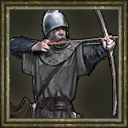
The Archer is the most basic unit and the one with the longest range. This is important for range is quintessential to the archer. They can deal a good amount of damage but they have no piercing damage, meaning they will deal reduced damage to units with Shields. Archers count both as Infantry units and as Ranged units. No matter how small, you will always want to have a group of archers in your army.
 Theon Greyjoy: Archers must be skillful if they want to actually kill something, though. Arming a bunch of peasants with bows will deal almost no damage.
Theon Greyjoy: Archers must be skillful if they want to actually kill something, though. Arming a bunch of peasants with bows will deal almost no damage.
 Maester Luwin: You’re not wrong, Theon, but even then, if you keep them safe for long enough, they will still be able to cause damage.
Maester Luwin: You’re not wrong, Theon, but even then, if you keep them safe for long enough, they will still be able to cause damage.
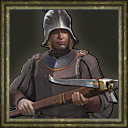
The Crossbowman is another Ranged unit. There’s three key aspects that differentiate this unit from the Archer: Range, damage, and Rate of Fire. Crossbowmen don’t have the range Archers have and, therefore, are at higher risk of getting caught by enemy units. They also fire much, much slower. To compensate, a Crossbow bolt hits very, very hard, and it even ignores Shields! If you have the skill to keep your Crossbowmen safe enough to shoot a bunch of bolts, you’ll see the results for yourself.
 Robb Stark: So the Archer is more reliable and it’s also more of a general purpose unit, while the Crossbowman is what you want to use if you know what you’re doing, right?
Robb Stark: So the Archer is more reliable and it’s also more of a general purpose unit, while the Crossbowman is what you want to use if you know what you’re doing, right?
 Rodrik Cassel: You’re basically correct, my lord. Also, a little note: Against unshielded units, Archers will deal more damage than a Crossbowman, but against shielded units, the Crossbowman will be the strongest pick. Considering that and the fact that most basic Infantry units are shielded, you will find yourself having to choose between reliability and superior damage, yes, but against unshielded unit, if that ever is the case, archers are 100% the better choice.
Rodrik Cassel: You’re basically correct, my lord. Also, a little note: Against unshielded units, Archers will deal more damage than a Crossbowman, but against shielded units, the Crossbowman will be the strongest pick. Considering that and the fact that most basic Infantry units are shielded, you will find yourself having to choose between reliability and superior damage, yes, but against unshielded unit, if that ever is the case, archers are 100% the better choice.
 Theon Greyjoy: It seems like, in any case, Archers by themselves can’t do much.
Theon Greyjoy: It seems like, in any case, Archers by themselves can’t do much.
 Rodrik Cassel: Well, there’s some sort of exception to that case.
Rodrik Cassel: Well, there’s some sort of exception to that case.
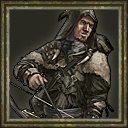
The Skirmisher is a very cheap unit, first of all, and very good for its price at both Ranged and Melee combat. Skirmishers can fight with their Swords against ranged units and easily beat them and kite melee units down with their range. Sadly, its efficiency is limited and against big numbers it will not hold on, so even as an emergency unit it’s not perfect, since it’s not a population effective unit. Skirmishers count as Infantry, Ranged, Irregular and Sword units.
 Robb Stark: I don’t quite understand what purpose does that unit serve.
Robb Stark: I don’t quite understand what purpose does that unit serve.
 Rodrik Cassel: It has as many uses as you can think of. I forgot to mention the Skirmisher is also a fast unit, so you can use it to distract enemies, quickly attack a group of ranged units separated from the rest. Try to hold a position for some time. Sneak behind enemy lines to take down a Command Post. Your call, actually.
Rodrik Cassel: It has as many uses as you can think of. I forgot to mention the Skirmisher is also a fast unit, so you can use it to distract enemies, quickly attack a group of ranged units separated from the rest. Try to hold a position for some time. Sneak behind enemy lines to take down a Command Post. Your call, actually.
 Robb Stark: I see, so Skirmishers are a useful tool if you know how to use them.
Robb Stark: I see, so Skirmishers are a useful tool if you know how to use them.
 Maester Luwin: Allow this old man to interrupt the class once again: Just like with Cavalry and Infantry, Ranged units vary a lot across the Seven Kingdoms: Crannogmen have a faster, with lower melee damage version of the Skirmisher, House Sarsfield, from the Westerlands, is known for their armored archers, your mother’s House, the Tullys, have the best archers of the realm and house Blackwood has Archers that can beat Cavalry on range.
Maester Luwin: Allow this old man to interrupt the class once again: Just like with Cavalry and Infantry, Ranged units vary a lot across the Seven Kingdoms: Crannogmen have a faster, with lower melee damage version of the Skirmisher, House Sarsfield, from the Westerlands, is known for their armored archers, your mother’s House, the Tullys, have the best archers of the realm and house Blackwood has Archers that can beat Cavalry on range.
 Rodrik Cassel: At the end of the day this is just a basic training. Only experience can teach you how to deal with every type of unit and situations.
Rodrik Cassel: At the end of the day this is just a basic training. Only experience can teach you how to deal with every type of unit and situations.
I hear the horn. Lord Stark is returning from its hunt. Hurry up, lads, let’s meet him at the gates.



I don't have this game but I just want to say that the way you presented this update was really cool, immersive, and interesting
Cuando van a sacar al menos una beta??